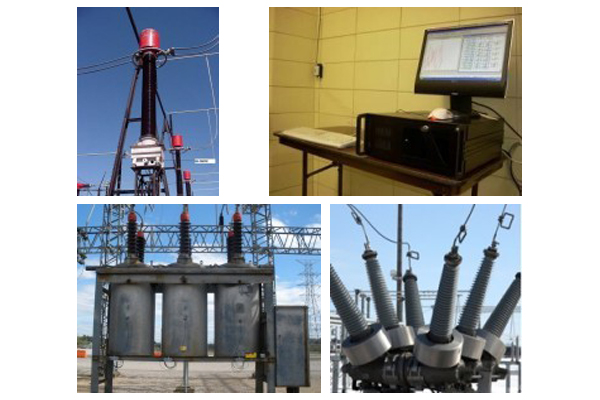
APPLICATIONS ON POWER EQUIPMENT
Acoustic Emission (AE) Wireless Sensor Nodes
This system together with its sensors is applicable to the monitoring of medium and high voltage equipment such as transformers, circuit breakers, CT’s, VT’s, GIS, bus bars, etc.
The main purpose of having Power Circuit Breakers on the substations is to protect the equipment from destructive short-circuit current surges. However, partial discharges/arcing, mechanical and thermal faults can be developed inside the unit due to different factors such as contamination, lack of use, manufacturing defect, etc. A combination of Acoustic Emission and Vibration techniques (AE/VA) is an excellent way to detect incipient faults before they develop into significant problems. Similar to Load Tap Changers, circuit breakers are evaluated while out of service by performing Acoustic Emission testing while Vibration testing is used while the circuit breakers are in service, the evaluation when the circuit breaker is not being operated is to perform by Acoustic Emission and the assessment when having an operation is done through the vibration technique.
Instrument transformers are critical components of the substations and are used to measure voltage and current in the system. External contamination (ozone, water) are the main factors causing degradation on the surface of this equipment. Partial discharge can develop either internally or superficially. Acoustic Emission testing is used to detect partial discharge on line before they reach critical levels without taking the equipment out of service or manipulating its operating conditions.
Recently, Acoustic Emission wireless sensors have been deployed to monitor 765 kV Current Transformers. The use of these sensors avoids the need to run cables over very long distances with all the labour and cost involved on that approach. The wireless sensors communications schemes can be point-point or wireless mesh. The AE sensor has the capability of monitoring up to 8analog inputs offering a multi-sensor monitoring capability under the same platform. View related publications for more information on these installations.
The use of Gas Insulated Substations (GIS) has been increased in recent years due to its advantages over the traditional Air Insulated Substations (AIS) (smaller, less maintenance work required, etc). However, the life of GIS is affected by several factors such as: conductive particles, partial discharges and contamination (decomposition products, water, etc).
Conductive particles inside the enclosure are known to reduce the breakdown level of gas insulated systems. Partial discharges can develop from conductive particles, contamination, defects during the manufacturing process, etc.
Acoustic Emission is capable of detecting both conductive particles (metallic particles bouncing inside the enclosure) and partial discharges.
— Multiple AE Wireless Sensor Nodes interfacing to a single USB Base Station module plugged into a computer or notebook computer.
— Very Low Power Design, short-term battery operation or permanent wired power, battery pack or Solar panels
— Mesh Network or repeater for larger systems
— Interfaces into AEwin™ software
— AE wireless sensors are been successfully used for monitoring power equipment
— Faster installation of sensors reduce the cost of cabling installation significantly
— Easy to relocate within same substation to monitor other equipment as needed
— Mesh Networking Capabilities allow monitoring equipment at very large distances
— All AE wireless sensors have the capability of adding additional sensors allowing multiple parameters been monitored with one device

